Did you know that Neon Glass Fish, with their vibrant colors and captivating presence, are becoming increasingly popular as unique aquarium decorations? These colorful fish for tanks are not only visually stunning but also fascinating to observe. Whether you’re a beginner or an experienced aquarium enthusiast, this comprehensive guide will provide you with everything you need to know to ensure the ultimate care of your Neon Glass Fish.
Table of Contents
Key Takeaways:
- Neon Glass Fish are visually striking and unique fish breeds for aquarium enthusiasts.
- Proper care and tank conditions are essential for their well-being and longevity.
- Research reputable breeders to ensure the health and well-being of your Neon Glass Fish.
- Creating a suitable environment with compatible tank mates is important for their social behavior.
- Neon Glass Fish require a balanced diet and specific feeding habits for optimal health.
Glass Fish Facts & Overview
Welcome to the fascinating world of glass fish! In this section, I will provide you with essential facts and an overview of these unique freshwater fish. Glass fish, scientifically known as Parambassis ranga, originate from South Asia. They are often referred to as painted glass fish when injected with colored dyes. Let’s dive deeper into the details!
Glass Fish Facts
- Glass fish grow up to 3.1 inches in length, making them relatively small compared to other fish species.
- These fish have a transparent body, allowing you to observe their internal organs and skeletal structure.
- Glass fish thrive in social groups of at least five individuals, showing their peaceful and social nature.
Glass Fish Overview
In terms of availability in the pet trade, glass fish are not as common as other fish species. However, they can be purchased online from reputable breeders who ensure their health and well-being.
Now, let’s take a closer look at their stunning transparent appearance:
| Common Name | Glass Fish |
|---|---|
| Scientific Name | Parambassis ranga |
| Origin | South Asia |
| Size | Up to 3.1 inches |
| Color | Transparent |
| Behavior | Peaceful and social |
As you can see, glass fish are truly captivating and unique. Their transparent bodies and peaceful nature make them a wonderful addition to any aquarium. Stay tuned for more interesting details about these fascinating fish!
Appearance & Behavior
Glass fish are named for their transparent, glass-like bodies. They have translucent bodies with high fins, giving them a unique and striking appearance. The internal organs and bones of the fish are visible to the naked eye. Male glass fish have dark edging on their fins and a subtle yellow coloration, especially during breeding time. Glass fish are shy and peaceful, but they are active and fast swimmers. They prefer to swim in the middle and lower regions of the tank. Glass fish require lots of hiding spots to feel safe and secure. They are not aggressive, but males can be territorial with each other during breeding time.
Glass Fish Appearance
Glass fish have transparent bodies and high fins, which make them visually captivating in any aquarium. Their translucent bodies allow for a unique view of their internal organs and skeletal structure. Male glass fish have dark edging on their fins and a subtle yellow coloration, especially during breeding time. The glass-like appearance of these fish adds a touch of elegance and intrigue to any aquarium.
Glass Fish Behavior
Glass fish are shy and peaceful creatures that prefer the middle and lower regions of the tank. They are active and fast swimmers, constantly exploring their surroundings. Glass fish have a natural instinct to hide, so it is essential to provide them with plenty of hiding spots to make them feel safe and secure. While glass fish are generally peaceful, males can exhibit territorial behavior towards each other during breeding time. Overall, glass fish are fascinating to observe and make striking additions to any aquarium.
| Glass Fish Appearance | Glass Fish Behavior |
|---|---|
| Transparent bodies | Shy and peaceful |
| High fins | Active and fast swimmers |
| Visible internal organs and skeletal structure | Prefer middle and lower regions of the tank |
| Dark edging on fins, subtle yellow coloration in males during breeding time | Require hiding spots to feel safe |
Glass Fish Care & Tank Requirements
Glass fish are relatively easy to care for, but breeding this species can be difficult. To ensure the well-being of your glass fish, it is essential to provide them with a tank that replicates their natural habitat and meet their specific tank requirements.
Tank Setup
Glass fish are native to still or slow-moving lowland waters with dense vegetation. Therefore, it is important to create a tank environment that resembles their natural habitat. Here are some key tank requirements:
- A tank size of at least 20 gallons for a small school of glass fish.
- Dense vegetation, such as live plants, to provide hiding spots and create a natural feel.
- Open swimming areas for glass fish to exhibit their natural schooling behavior.
- A substrate of sand or small gravel to mimic their natural habitat.
Creating a visually appealing and natural-looking tank not only enhances the well-being of the glass fish but also adds to the overall aesthetic of your aquarium.
Water Parameters
Proper monitoring and maintenance of water parameters are crucial for the health and vitality of glass fish. Here are the recommended water parameters:
| Parameter | Optimal Range |
|---|---|
| Temperature | 75-82°F |
| pH | 6.5-7.5 |
| Gh | 4-15 dGH |
| Kh | 2-8 dKH |
| Ammonia, Nitrite, Nitrate | 0 ppm |
Regular water testing and maintenance, including partial water changes, help ensure the water parameters remain optimal for glass fish.
Diet
Glass fish are carnivorous and require a varied and protein-rich diet. Non-painted glass fish can be fed a variety of meaty foods such as brine shrimp, bloodworms, and daphnia. It is important to ensure a balanced diet to meet their nutritional needs. However, painted glass fish require special care, as they may be more susceptible to health issues due to the dye injection process.
By providing proper care and meeting the specific tank requirements, you can ensure the well-being of your glass fish and create an eye-catching aquatic fauna display in your aquarium.
Tank Mates
Glass fish are peaceful and do well with similar, peaceful tank mates. Creating a balanced and compatible aquatic community is essential to ensure the well-being and harmony among tank inhabitants. It is important to research and carefully select tank mates that have similar care requirements and temperament as glass fish.
Here are some suitable tank mates for glass fish:
- Danios
- Rasboras
- Tetras
- Guppies
These species are known for their peaceful nature and will coexist harmoniously with glass fish. However, it is crucial to avoid large or aggressive fish species that may bully or harm the glass fish.
By choosing tank mates that share the same peaceful temperament, you can create a tranquil and visually appealing underwater community. Remember to provide ample hiding spots and swimming space for all the inhabitants of your aquarium.
Aquatic Community Compatibility
When selecting tank mates for your glass fish, consider their compatibility in terms of size, water parameters, and behavior. It is crucial to ensure that all the fish in your aquarium have similar care requirements to thrive in the same environment.
By adhering to proper aquatic community compatibility, you can create a thriving and visually stunning aquarium that showcases the unique beauty of glass fish and their tank mates.
Diet and Feeding
Proper diet and feeding habits are essential for the health and well-being of glass fish. As carnivorous fish, they require a diet rich in meaty foods to thrive. By providing them with a diverse range of frozen and live foods, you can ensure that their nutritional needs are met. Some suitable options for glass fish include:
- Mosquito larvae
- Tubifex
- Brine shrimp
- Bloodworms
Unlike other fish species, glass fish may not readily accept flake foods. Therefore, it is important to offer them suitable alternatives like the ones mentioned above to meet their dietary requirements effectively.
It is recommended to feed glass fish once or twice a day, in small portions that they can consume within two minutes. Overfeeding can lead to health issues and water quality problems, so it’s best to provide them with appropriate portions. Removing any leftover food from the tank after feeding is crucial for maintaining good water quality.
Recommended Foods for Glass Fish
| Food Type | Description |
|---|---|
| Mosquito larvae | Small, protein-rich larvae that are highly nutritious for glass fish. |
| Tubifex | Worms commonly found in muddy substrates, providing a natural food source for glass fish. |
| Brine shrimp | Small crustaceans that are rich in protein, vitamins, and minerals, making them an excellent food choice for glass fish. |
| Bloodworms | Red larvae of the midge fly, packed with nutrients and highly palatable to glass fish. |
Providing a varied and nutritious diet for your glass fish will contribute to their overall health and vibrant colors.
Breeding
Breeding glass fish can be a challenging but rewarding endeavor for aquarium enthusiasts. Proper conditioning and a suitable breeding environment are crucial for the successful hatching and raising of fry. Here, I will guide you through the essential steps to breed glass fish and ensure the survival and growth of the next generation.
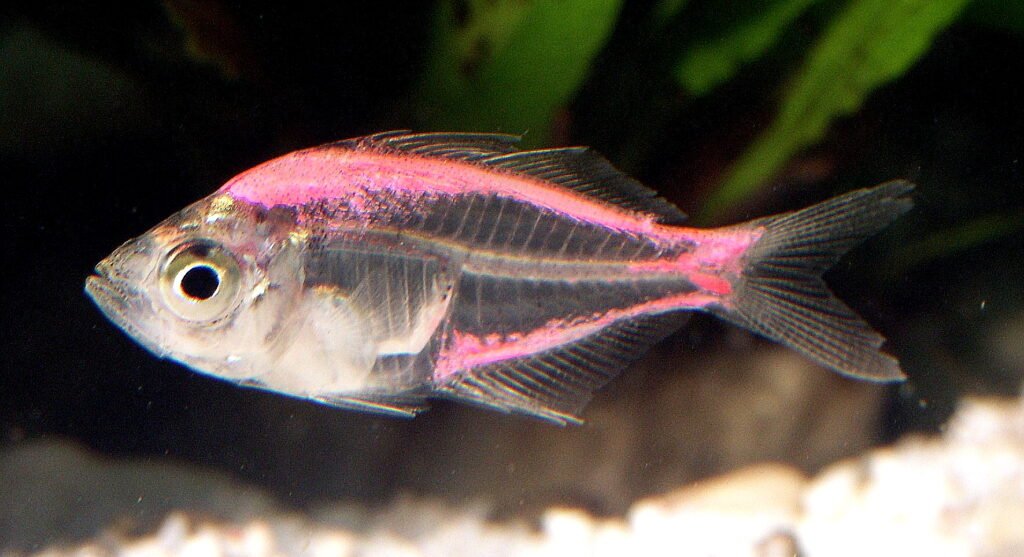
Credit: https://en.wikipedia.org/wiki/Painted_fish
Conditioning the Pair
To initiate breeding, it is essential to condition a pair of glass fish by providing them with optimal care and nutrition. Start by raising the temperature in the tank to approximately 78-82°F (25-28°C) to stimulate their reproductive instincts.
Supply a protein-rich diet consisting of high-quality live or frozen foods such as blackworms, bloodworms, and brine shrimp. This diet will help enhance their overall health and prepare them for successful breeding.
Creating a Breeding Tank
Creating a separate breeding tank is crucial to provide an ideal environment for the glass fish to breed and for the fry to survive. Set up a tank with appropriate water parameters, including temperature, pH level, and hardness, similar to their natural habitat.
Introduce plenty of dense vegetation, such as Java Moss or Water Sprite, to serve as hiding places and protect the eggs from potential predators. Creating a natural environment will encourage the glass fish to spawn and provide a safe space for the fry to grow.
Egg Deposition and Hatching
The female glass fish can deposit up to 200 eggs during one breeding cycle. These eggs are transparent and can be scattered on the vegetation or other surfaces within the breeding tank. The male fish will then fertilize the eggs.
The eggs typically hatch within 24 hours, and the fry will be free-swimming shortly after. At this stage, it is crucial to provide them with appropriate food. Start by feeding them infusoria or baby brine shrimp, as these tiny organisms will meet their nutritional needs until they can accept larger food particles.
Maintaining Water Quality
Regular water changes are essential to maintain optimal water quality for breeding glass fish. Aim for weekly water changes of around 25% to ensure the removal of any accumulated waste or potential pollutants.
Monitor the water parameters closely, including temperature, pH level, and ammonia, nitrite, and nitrate levels, to ensure they remain within the suitable range for glass fish breeding. It is also essential to keep the breeding tank well-maintained and free from debris to promote a healthy environment for the fry.
To help you navigate through the breeding process of glass fish, I have summarized the key steps and considerations in the following table:
| Step | Description |
|---|---|
| Conditioning the Pair | Raise the temperature and provide a protein-rich diet to prepare the glass fish for breeding. |
| Creating a Breeding Tank | Set up a separate tank with appropriate water parameters and ample vegetation for spawning and fry protection. |
| Egg Deposition and Hatching | The female fish will deposit eggs, which will hatch in approximately 24 hours. Feed the fry appropriate food once they become free-swimming. |
| Maintaining Water Quality | Regular water changes and monitoring of water parameters are essential to ensure the health and development of the fry. |
With patience, dedication, and proper care, you can navigate the challenges of breeding glass fish and witness the beauty of new life thriving in your aquarium. Remember to provide a suitable environment, closely monitor water quality, and adjust your breeding techniques as needed. By following these guidelines, you can successfully breed glass fish and contribute to the preservation of these unique and fascinating fish breeds.
Glass Fish for Your Aquarium?
Glass fish can make wonderful additions to home community tanks. They are peaceful, visually striking, and exhibit captivating schooling behavior. Before considering adding glass fish to your aquarium, it is important to ensure that the tank is suitable for their needs. A densely vegetated tank with slow-moving, peaceful fish species is an ideal environment for glass fish. Glass fish are not recommended for beginners who are new to breeding fish, as their fry require specialized care. With proper care and housing, glass fish can be fascinating additions to any aquarium.
Glass Fish Tank Requirements
To create a suitable habitat for glass fish in your aquarium, consider the following tank requirements:
- Size: Glass fish require a minimum tank size of 20 gallons to provide ample swimming space for their schooling behavior.
- Water Parameters: Maintain a temperature range of 75-79°F (24-26°C) and a pH range of 6.5-7.5 for optimal health.
- Vegetation: A densely planted tank with live plants provides hiding spots and creates a natural environment for glass fish.
- Filtration: Use a reliable filtration system to maintain clean and stable water conditions, as glass fish are sensitive to poor water quality.
- Tank Mates: Choose peaceful fish species that are compatible with glass fish, such as danios, rasboras, and peaceful tetras.
Creating a suitable tank environment will ensure the well-being and vibrant colors of your glass fish.
Comparing Glass Fish to Other Unique Fish Breeds
To help you decide on the perfect fish for your aquarium, here’s a comparison between glass fish and other unique fish breeds:
| Fish Breed | Main Characteristics | Difficulty Level | Vibrancy | Recommended Tank Size |
|---|---|---|---|---|
| Glass Fish | Transparent bodies, peaceful temperament, captivating schooling behavior | Intermediate | High | 20 gallons or more |
| Neon Tetra | Colorful iridescent scales, peaceful nature, suitable for community tanks | Beginner | Medium | 10 gallons or more |
| Glass Catfish | Transparent bodies, peaceful, nocturnal, visible internal organs | Intermediate | Medium | 30 gallons or more |
Choosing the right Fish Breed depends on your preferences, tank size, and experience level as an aquarium owner.
Neon Tetra Stats
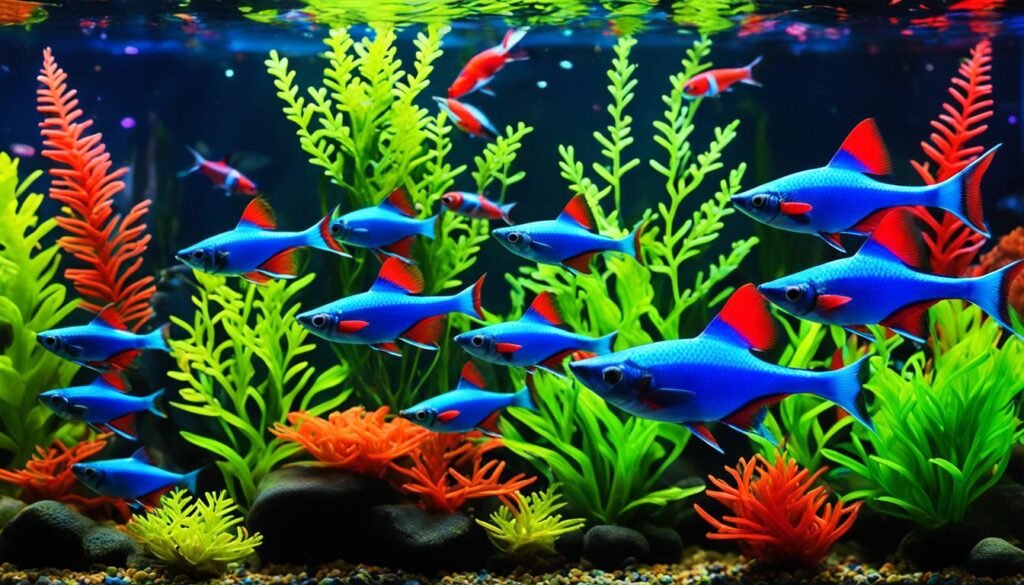
Neon tetras, scientifically known as Paracheirodon innesi, are one of the oldest and most popular tropical fish in the hobby. These vibrant freshwater fish are renowned for their striking iridescent colors and peaceful temperament, making them a perfect addition to any non-aggressive community tank.
Native to South America, neon tetras are commonly found in clearwater and blackwater streams across countries like Columbia, Peru, and Brazil. These small fish typically grow up to 1.5 inches in length and have a lifespan of about 5 years.
However, it’s important to note that neon tetras are susceptible to neon tetra disease, a fatal condition that can be prevented by proper quarantine and care. By ensuring their well-being and providing a peaceful community tank, you can enjoy the beauty and tranquility that these popular fish species bring to your aquarium.
Neon Tetra Stats at a Glance:
- Scientific Name: Paracheirodon innesi
- Origin: South America (Columbia, Peru, Brazil)
- Average Size: Up to 1.5 inches
- Lifespan: Approximately 5 years
- Tank Compatibility: Peaceful community tank
Neon tetras are cherished by aquarists for their vibrant colors and peaceful nature. They are known to thrive in the company of other peaceful fish species, creating a harmonious and visually appealing community tank. Now, let’s move on to the next section where we will explore another fascinating fish species, the glass catfish.
Glass Catfish Habitat and Description
Glass catfish, scientifically known as Kryptopterus spp., are a fascinating type of freshwater catfish native to Southeast Asia. These unique fish are renowned for their transparent appearance, allowing observers to see their intricate internal organs and skeletal structure. Glass catfish typically inhabit slow-moving rivers, streams, and areas with dense vegetation.
These fish have a preference for blackwater habitats, characterized by water stained brown due to the presence of tannins. Glass catfish are relatively small, growing up to 5 inches in length, and have a lifespan of about 3-5 years.
Given their sensitivity to water quality changes, glass catfish require a well-maintained aquarium with stable parameters to thrive. It is important for aquarium enthusiasts to closely monitor their tank’s water conditions and provide a suitable environment that mimics the fish’s natural habitat.
Glass Catfish Habitat Requirements
Creating a conducive habitat for glass catfish involves replicating their preferred natural environment. Here are the key factors to consider:
- Water Parameters: Glass catfish thrive in water that is soft to moderately hard, slightly alkaline, and ideally blackwater. It is crucial to ensure consistent water quality by utilizing filtration systems and conducting regular water tests.
- Aquarium Decorations: Adding dense vegetation, such as live plants and floating leaves, to the aquarium creates a visually appealing and secure environment for the glass catfish. Providing hiding spots with the use of driftwood, rocks, or caves is also essential to reduce stress levels.
- Water Flow: Glass catfish prefer slow-moving water, replicating their natural habitat. Utilizing a gentle water flow system or adjusting the filtration settings accordingly will provide the optimal flow rate for the fish.
- Aquarium Size: Considering their adult size of up to 5 inches, it is important to provide sufficient space for the glass catfish to swim and explore. A tank size of 20 gallons or larger is recommended to accommodate a small school of glass catfish.
By meeting these habitat requirements, aquarium enthusiasts can ensure the well-being and longevity of their glass catfish. Creating a suitable environment will not only enhance the beauty of the aquarium but also promote the natural behavior and health of these captivating freshwater fish.
Conclusion
Neon Glass Fish and Glass Catfish are visually striking and unique fish breeds that can greatly enhance the beauty of any aquarium. These vibrant tank fish are popular choices among aquarium enthusiasts due to their captivating colors and mesmerizing behavior. While they may have specific care requirements and can be challenging to breed, with the right tank conditions, balanced diet, and suitable tank mates, you can ensure their well-being and longevity.
Proper Neon Glass Fish care involves providing a well-maintained tank with ample hiding spots and a suitable water environment. These colorful fish thrive in groups, making it important to keep them in schools of at least five individuals. Additionally, a diverse and balanced diet consisting of meaty foods is essential for their health and vitality. By meeting these requirements, you can create an optimal environment for Neon Glass Fish to thrive.
Glass Catfish care is focused on providing a well-maintained aquarium with stable water parameters and ample hiding spots. These transparent fish prefer blackwater habitats and can be sensitive to changes in water quality. To ensure their well-being, it is important to maintain proper water conditions and feed them a varied diet of live and frozen foods. By meeting these care requirements, you can create a suitable home for Glass Catfish in your aquarium.
Whether you choose Neon Glass Fish or Glass Catfish for your home aquarium, these vibrant tank fish are sure to add a touch of mesmerizing beauty to your aquatic display. With their unique appearance and captivating behavior, they are sure to be a source of fascination and joy for any aquarium enthusiast.
FAQ
What is a glass fish?
Glass fish, also known as painted glass fish, are small freshwater fish with transparent bodies and high fins. They are popular in the aquarium hobby due to their captivating appearance.
Where do glass fish originate from?
Glass fish originate from South Asia.
How big do glass fish get?
Glass fish typically grow to about 3.1 inches in length.
What is the lifespan of a glass fish?
Glass fish have a lifespan of about three to four years.
Are glass fish commonly found in the pet trade?
Glass fish are relatively uncommon in the pet trade compared to other fish species.
Can glass fish be injected with dye to create colorful varieties?
Yes, captive-bred glass fish are often injected with dye to create colorful varieties. However, this practice is harmful to the fish and should be avoided.
How many glass fish should be kept together?
Glass fish thrive in social groups of at least five individuals.
What are suitable tank mates for glass fish?
Suitable tank mates for glass fish include danios, rasboras, tetras, and guppies. It is important to avoid large or aggressive fish species that may bully or harm the glass fish.
What should I feed my glass fish?
Glass fish are carnivorous and require a diet rich in meaty foods. They can be fed a variety of frozen and live foods such as mosquito larvae, tubifex, brine shrimp, and bloodworms.
How often should I feed my glass fish?
Glass fish should be fed once or twice a day, in small portions that they can consume within two minutes.
How can I breed glass fish?
Breeding glass fish can be challenging. To initiate breeding, it is necessary to condition a pair of glass fish by raising the temperature in the tank and providing a protein-rich diet. Creating a separate breeding tank with appropriate water parameters and vegetation is essential for successful breeding.
Are glass fish suitable for beginners?
Glass fish are relatively easy to care for, but breeding this species can be difficult. They are not recommended for beginners who are new to breeding fish, as their fry require specialized care.
Can glass fish be kept in a community tank?
Glass fish are peaceful and can be kept in a community tank with similar, peaceful tank mates. It is important to choose tank mates that have similar care requirements and temperament as glass fish.
What is the care level required for glass fish?
Glass fish have a moderate care level and require a tank that replicates their natural habitat, appropriate water parameters, and a balanced diet. Regular monitoring and maintenance of water quality are also important.
Are glass fish suitable for a beginner’s aquarium?
Glass fish can be suitable for a beginner’s aquarium, but it is crucial to research and understand their care requirements before adding them to the tank.
What are neon tetras?
Neon tetras are small, tropical fish known for their striking iridescent colors and peaceful temperament. They are a popular addition to non-aggressive community tanks.
Where do neon tetras originate from?
Neon tetras originate from South America, specifically clearwater and blackwater streams in countries like Columbia, Peru, and Brazil.
How big do neon tetras get?
Neon tetras typically grow up to 1.5 inches in length.
What is the lifespan of a neon tetra?
Neon tetras have a lifespan of about five years.
What is a glass catfish?
Glass catfish, also known as ghost catfish, are a freshwater catfish species native to Southeast Asia. They are known for their transparent appearance.
Where do glass catfish live?
Glass catfish are typically found in slow-moving rivers, streams, and areas with dense vegetation. They prefer blackwater habitats.
How big do glass catfish get?
Glass catfish can grow up to 5 inches in length.
What is the lifespan of a glass catfish?
Glass catfish have a lifespan of about 3-5 years.
What are suitable tank mates for glass catfish?
Suitable tank mates for glass catfish include peaceful fish species that have similar care requirements. It is important to provide a well-maintained aquarium with stable parameters for their well-being.
References
Aquarium
and Tropical Fish Association (ATA)
National
Aquarium Society (NAS)
Ornamental Aquatic
Trade Association (OATA)
I am a passionate aquarist with over 30 years of hands-on experience in fishkeeping. My journey began at a young age, collecting fish from the wild and learning through experimentation. Specializing in tropical fish, I bring a deep understanding of the hobby to FishKeepingMadeSimple. The site provides honest, detailed reviews of essential products and accessories to help fellow enthusiasts create the best environments for their fish.


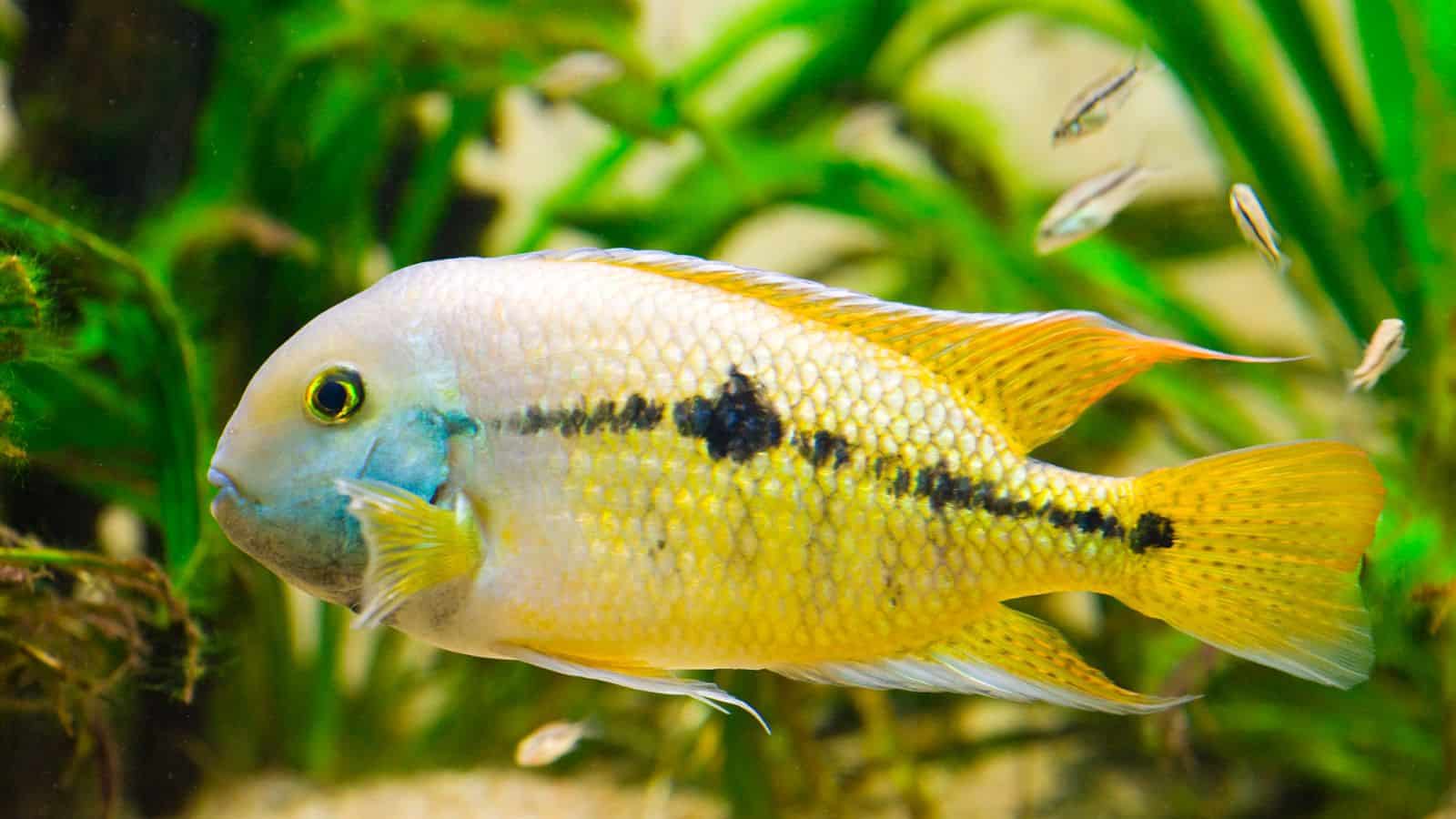
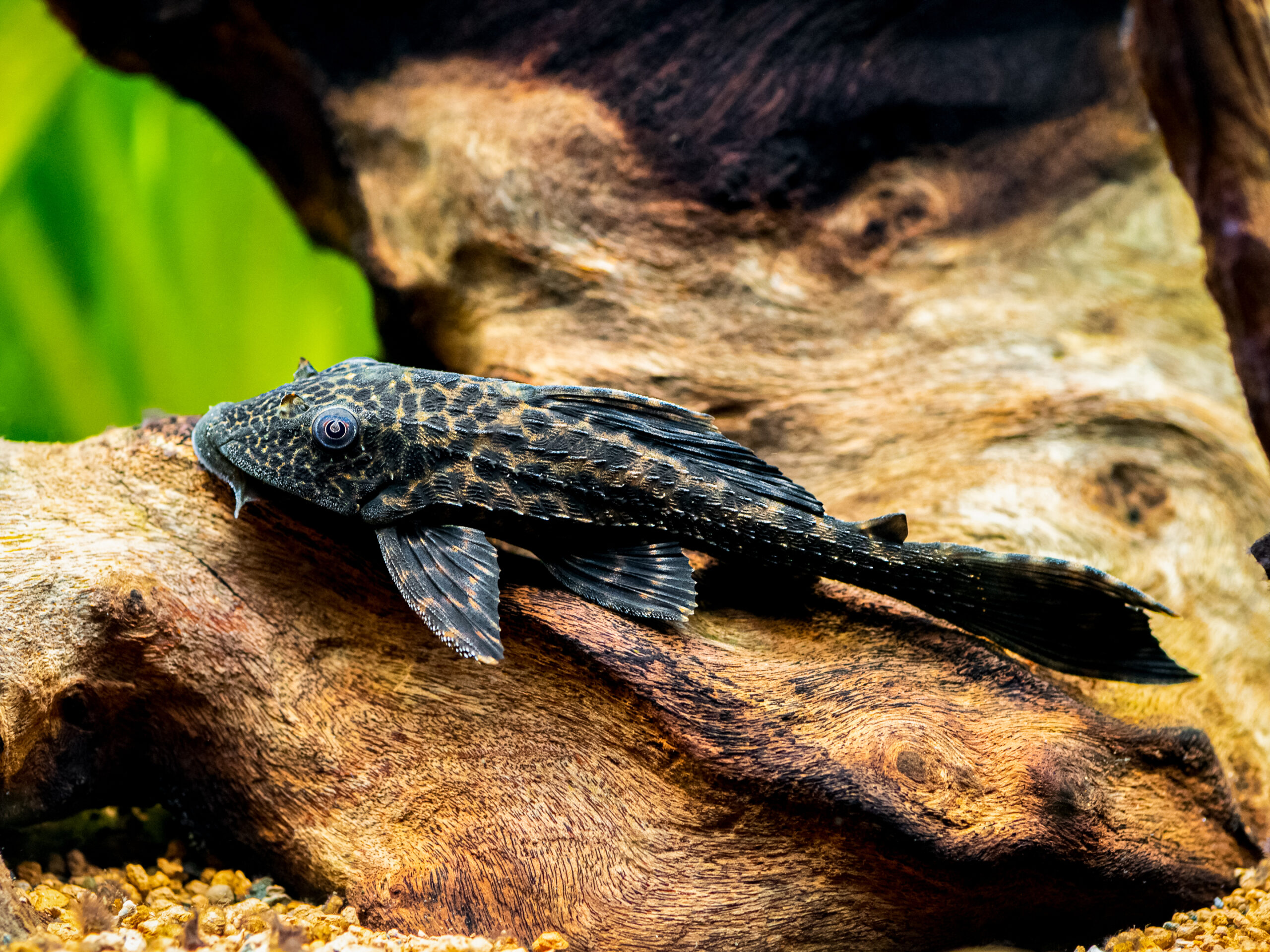
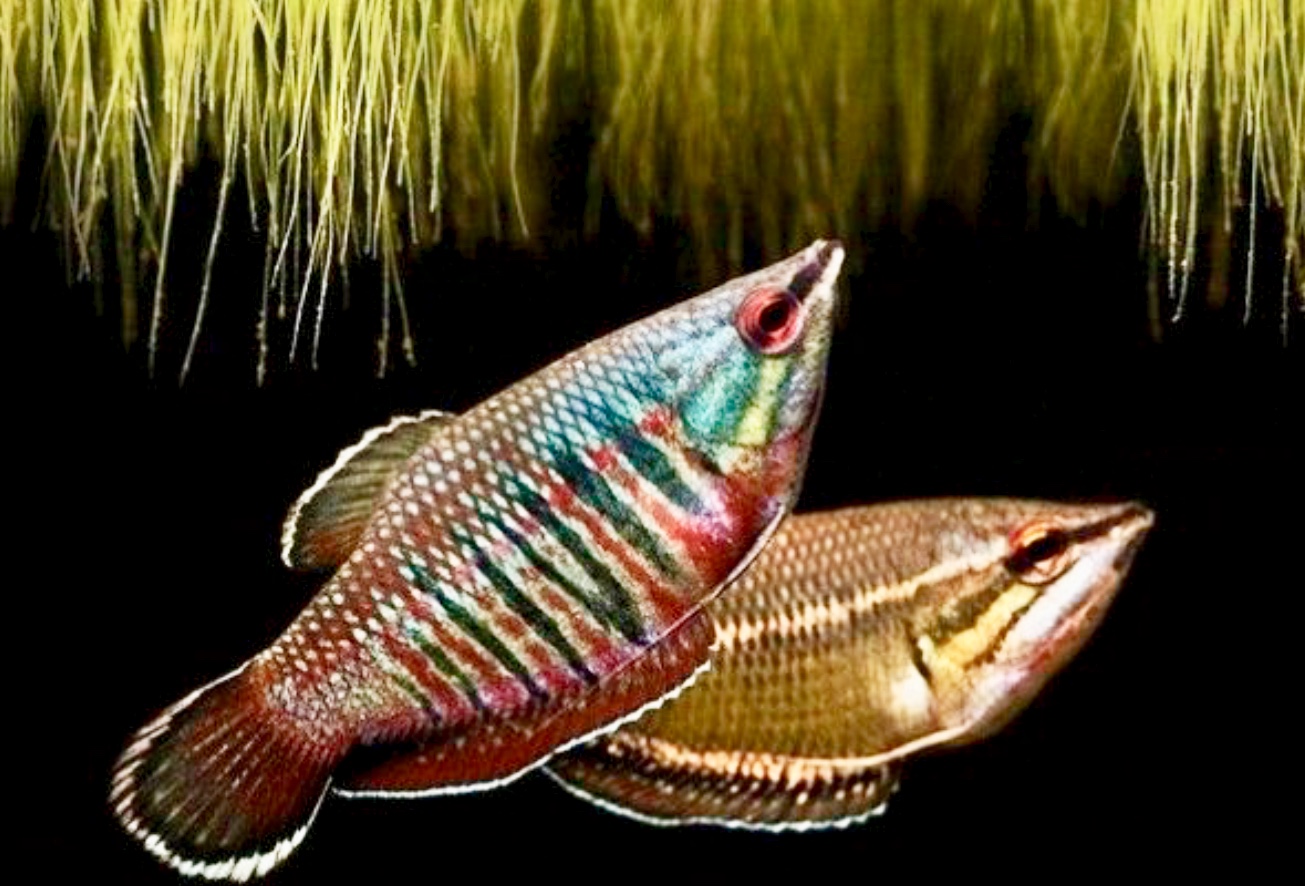
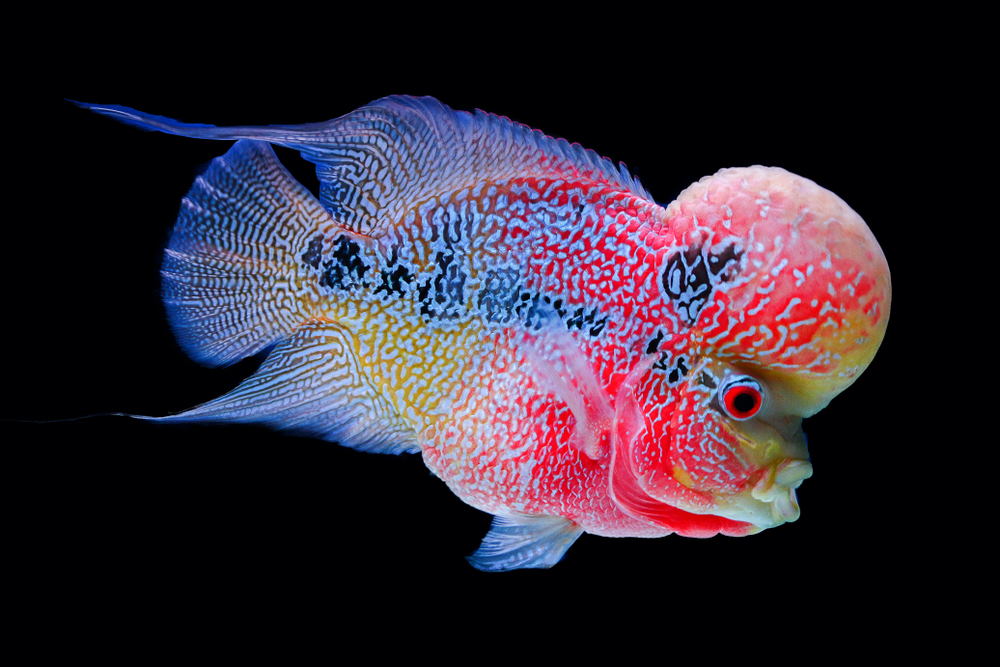
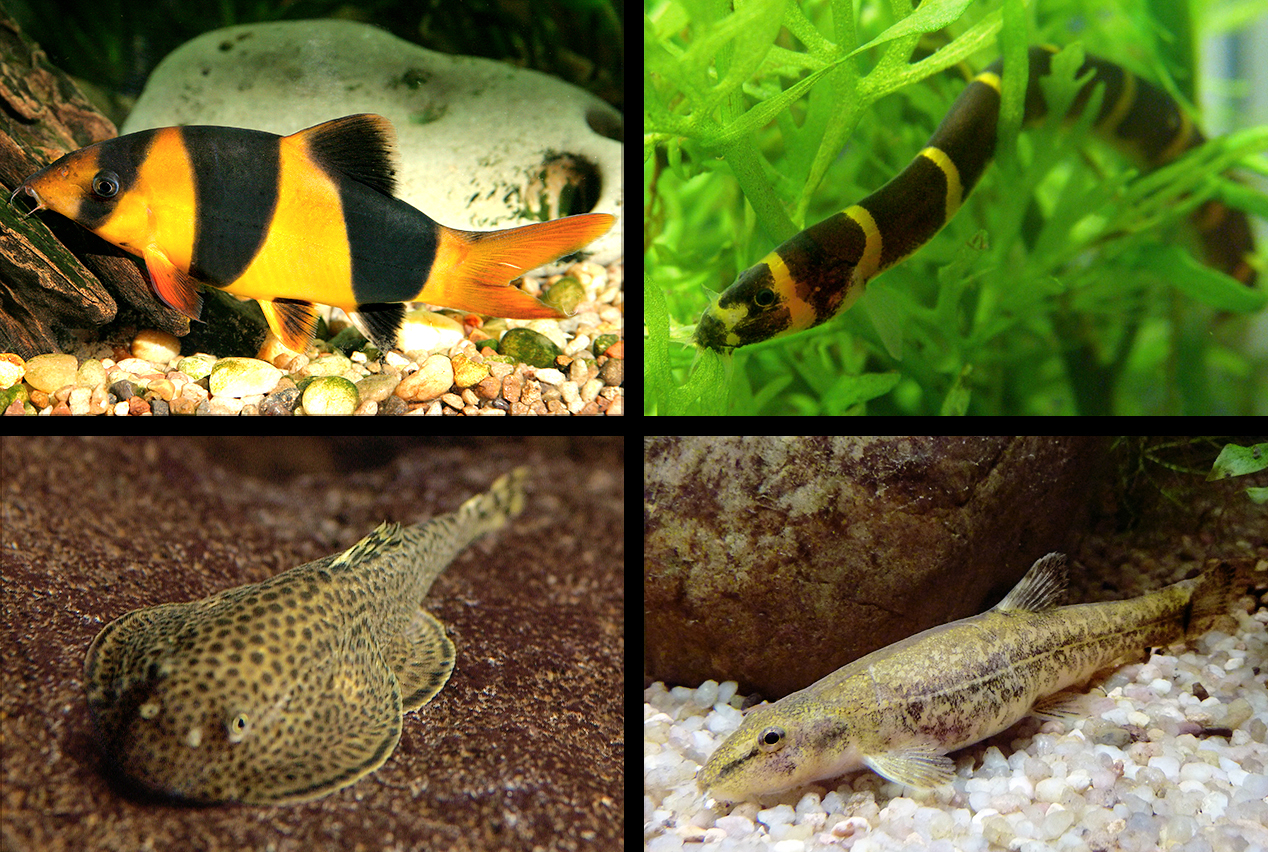

[…] Cichlids are known to change color during breeding, with males turning a deep dark hue. Taking care of these unique fish requires proper knowledge and understanding of their specific […]
[…] loaches are social and playful fish that require specific care to thrive in an […]
[…] loaches are unique freshwater fish that require specific care and habitat […]
[…] ensure the long and healthy life of your black ghost knife fish. Remember, proper black ghost knife fish care involves investing time and effort into various aspects, and the reward of a thriving and happy […]